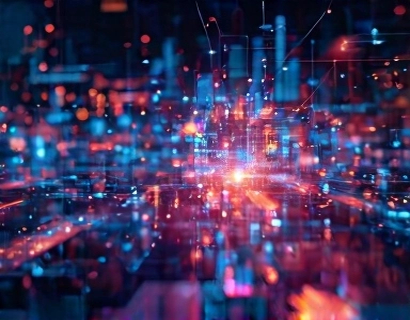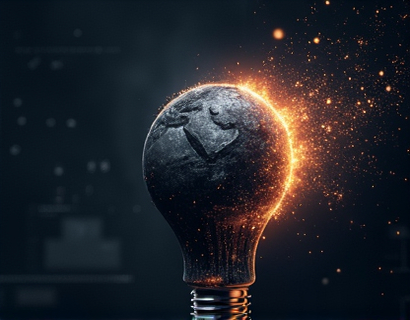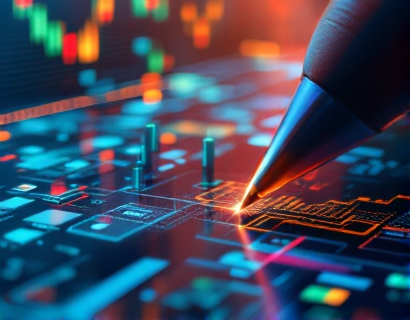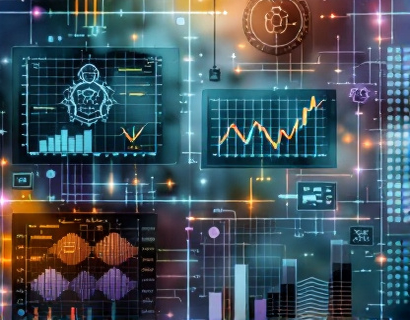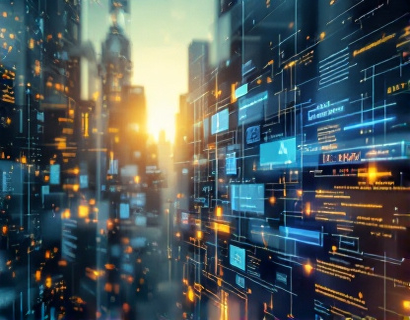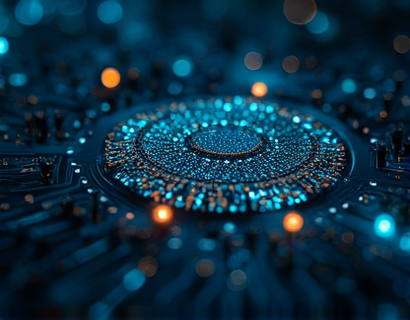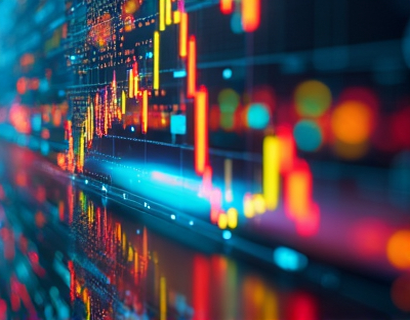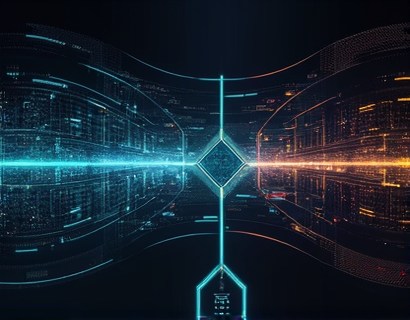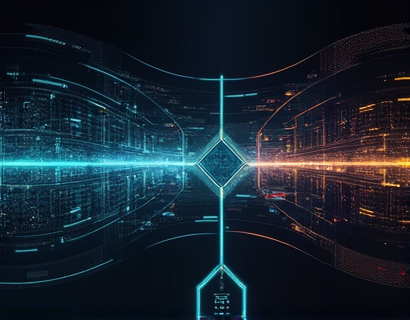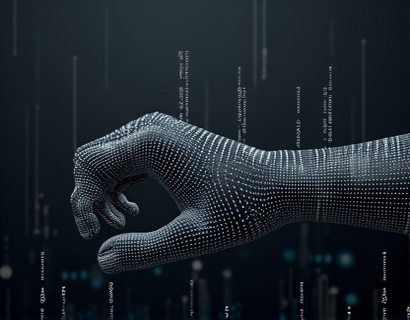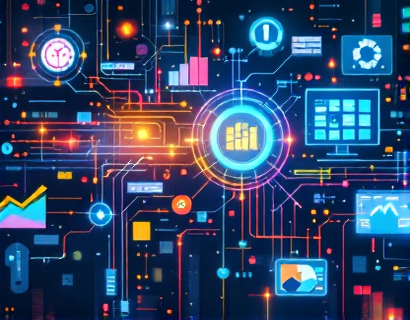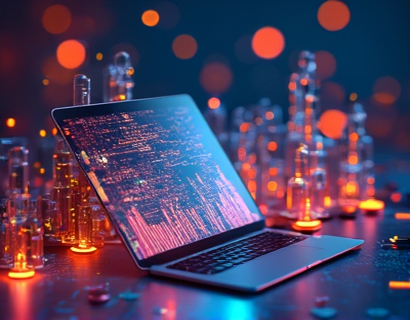Decentralized Innovation: Elevating Digital Experiences with AI and Crypto Integration
The digital landscape is undergoing a profound transformation, driven by the convergence of artificial intelligence (AI), blockchain technology, and decentralized applications (dApps). This revolution is not just about technological advancements but a fundamental shift in how we interact with digital services, enhancing user experiences and opening new growth opportunities. For tech professionals and enthusiasts, understanding the intersection of AI, blockchain, and decentralization is crucial for navigating and thriving in this evolving tech environment.
The integration of AI and blockchain technologies is creating a new paradigm in digital innovation. AI brings intelligence, automation, and personalization to digital experiences, while blockchain provides security, transparency, and decentralization. When combined, these technologies offer a powerful toolkit for redefining digital interactions and unlocking new possibilities.
AI in Decentralized Systems
AI plays a pivotal role in enhancing the functionality and user experience of decentralized systems. In a decentralized environment, AI can process and analyze vast amounts of data from various sources, providing insights and automating complex tasks without the need for a central authority. This capability is particularly valuable in dApps, where efficiency and accuracy are paramount.
One of the key applications of AI in decentralized systems is in smart contracts. AI can be used to write more sophisticated and adaptive smart contracts that can respond to changing conditions and user behaviors. For instance, AI-driven smart contracts can automatically adjust terms based on market conditions or user preferences, ensuring that agreements remain fair and relevant.
Moreover, AI-powered chatbots and virtual assistants can enhance user interactions within decentralized platforms. These AI-driven interfaces can provide personalized support, answer queries, and guide users through complex processes, making the experience more intuitive and user-friendly. The combination of AI and decentralization ensures that these interactions are secure and privacy-preserving, as data is managed across a distributed network rather than a central server.
Blockchain and Decentralized Applications
Blockchain technology is the backbone of decentralized applications, offering a secure and transparent way to manage data and transactions. dApps leverage blockchain to eliminate the need for intermediaries, reducing costs and increasing trust among users. The decentralized nature of these applications ensures that no single entity has control, making them more resilient to censorship and manipulation.
One of the most significant advantages of dApps is their ability to foster community-driven development. Unlike traditional applications, where updates and improvements are controlled by a central authority, dApps can evolve based on community input and contributions. This collaborative approach not only enhances the quality and relevance of the application but also builds a stronger and more engaged user base.
Blockchain's immutable ledger provides a tamper-proof record of all transactions and interactions within a dApp. This transparency is crucial for building trust and ensuring accountability. Users can verify the integrity of the system and the authenticity of data, which is particularly important in sectors like finance, supply chain, and identity verification.
Synergy Between AI and Blockchain
The synergy between AI and blockchain creates a synergistic effect that amplifies the benefits of both technologies. AI can process and analyze the vast amounts of data stored on a blockchain, extracting valuable insights and patterns that can inform decision-making and improve system performance. Conversely, blockchain provides a secure and transparent environment for AI models to operate, ensuring that data integrity and privacy are maintained.
For example, in the realm of decentralized finance (DeFi), AI can be used to develop predictive models for market trends, risk assessment, and portfolio optimization. These AI-driven insights can be integrated into dApps, allowing users to make more informed financial decisions. The decentralized nature of DeFi ensures that these services are accessible to anyone with an internet connection, democratizing financial opportunities.
Another area where AI and blockchain intersect is in identity verification and management. Blockchain can store user identities in a secure and decentralized manner, while AI can enhance the verification process by analyzing behavioral patterns and biometric data. This combination can significantly reduce the risk of identity theft and fraud, providing users with greater control over their personal information.
Enhancing User Experiences
The integration of AI and blockchain in decentralized systems is not just about technical advancements; it's fundamentally about enhancing user experiences. By leveraging AI, dApps can offer personalized and intuitive interfaces that adapt to user preferences and behaviors. This personalization can range from customized content recommendations to tailored financial advice, making the digital experience more relevant and valuable to each user.
Moreover, the decentralized nature of these systems ensures that users have greater autonomy and control over their data and interactions. With AI-driven tools, users can manage their digital identities, transactions, and interactions with ease and confidence. The transparency provided by blockchain further empowers users, as they can verify and audit the system's operations.
User engagement is another critical aspect where AI and blockchain can make a significant impact. Decentralized platforms can use AI to analyze user behavior and preferences, enabling the creation of more engaging and interactive experiences. For instance, AI can facilitate community-driven content creation, gamification, and reward systems, fostering a more active and loyal user base.
Challenges and Considerations
While the potential of AI and blockchain in decentralized systems is immense, there are several challenges and considerations that need to be addressed. One of the primary challenges is scalability. Blockchain networks, particularly those using proof-of-work consensus mechanisms, can face performance bottlenecks as the number of transactions increases. AI can help optimize blockchain operations, but significant advancements in blockchain technology are still needed to support widespread adoption.
Another challenge is the regulatory landscape. The decentralized and often anonymous nature of blockchain and AI applications can raise concerns among regulators regarding compliance, security, and consumer protection. It is essential for developers and businesses to navigate these regulatory waters carefully, ensuring that their solutions meet legal requirements while maintaining the core principles of decentralization and transparency.
Interoperability is another critical factor. As the ecosystem of decentralized applications grows, the need for seamless interaction between different platforms and systems becomes increasingly important. AI can play a role in developing standards and protocols that facilitate interoperability, but this requires collaboration and standardization efforts across the industry.
Future Prospects
The future of decentralized innovation, powered by AI and blockchain, is promising and full of potential. As technology continues to evolve, we can expect to see more sophisticated and user-friendly decentralized applications that seamlessly integrate AI-driven features. The convergence of these technologies will likely lead to new business models, enhanced user experiences, and unprecedented growth opportunities.
One exciting area to watch is the development of decentralized artificial intelligence (DAI). DAI combines the power of AI with the decentralized principles of blockchain, allowing for the creation of AI models that are transparent, secure, and community-driven. This could revolutionize industries such as healthcare, where AI models can be trained on decentralized data sets, ensuring privacy and ethical use.
Additionally, the rise of Web3, the next evolution of the internet, will further accelerate the adoption of decentralized technologies. Web3 aims to give users more control over their data and online experiences, with AI and blockchain at the core. As more users and businesses embrace this vision, the demand for decentralized solutions will continue to grow, driving innovation and adoption.
In conclusion, the integration of AI and blockchain in decentralized systems is transforming the digital landscape, offering enhanced user experiences, new growth opportunities, and a more equitable and transparent tech environment. For tech professionals and enthusiasts, staying informed and engaged with these developments is essential for harnessing the full potential of this exciting frontier.





